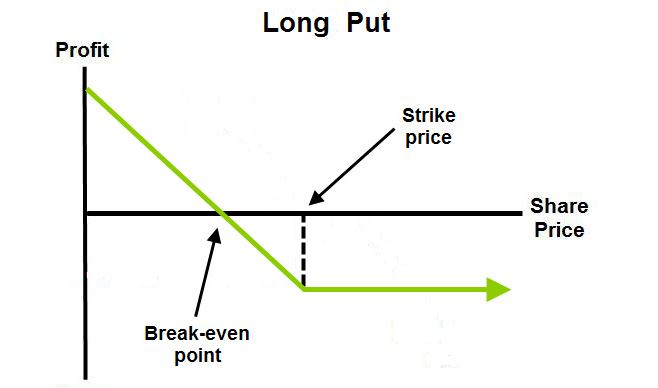A bear market can be a scary time for investors. All of those gains that you made over the past year or two can quickly disappear, and it may feel like you are stuck in a downward spiral. However, there is no need to panic! A bear market is a great time to invest in stock options. In this blog post, we will discuss three different bear market options strategies that you can use to profit in a down market.
We discuss:
- What is a Bear Market?
- Buying LEAPS Options in a Bear Market
- Buying Put Options in a Bear Market
- Selling Iron Condors in a Bear Market
- Which Strategy is the Best for a Bear Market?
Let’s jump right into it.
What is a Bear Market?

A bear market is defined as a period where the stock market experiences a sustained decline in prices. Securities can be considered to be in a bear market if they experience a decline of 20% or more over two months or more.
Bear markets are typically caused by an economic recession, high unemployment, and/or inflation. Stock prices will usually bottom out before beginning to rebound. However, this is not always the case, and some bear markets can last for several years.
Buying LEAPS Options in a Bear Market

LEAPS options are long-term stock options that have a duration of more than one year. These options are typically used by investors who are looking to hedge their portfolios against a potential market decline.
When buying LEAPS options in a bear market, you are essentially betting that the stock price will rebound within the next year or two. This is a great strategy if you are bullish on a particular stock or sector but do not want to commit to buying the underlying shares.
The advantage of buying the LEAPS option versus the stock is that you will have limited downside risk. If the stock price does not rebound as expected, the most you can lose is only the premium that you paid for the option. This is a great option (no pun intended) in a bear market since you are not sure if the stock will continue to follow the market down further.
Here is an example of buying a LEAPS option
DraftKings is trading at $13.53 per share. If we look out at the Jan 2024 10 strike ITM LEAPS option it cost $660.
This is because the LEAPS call option with a strike price of $10 is trading at $6.60.
You buy one contract for 100 shares, so your total investment is $660 ($6.60 premium x 100 shares). Much less than it would cost to buy the 100 shares outright which would cost $1,353.
Now let’s look at one year later. If DraftKings is trading at $64 per share like it was in Sept of last year (so less than 1 year ago) you will have a big gain of around $4700.
Your LEAPS call option is now worth $54 ($64 stock price – $10 strike price = $54). $54 x 100 shares is $5400. Subtract out the $660 paid upfront and you have ($5400-660) = $4740 profit.
$4740 profit on $660 invested is more than a 700% return on investment. This is why it is good to have a few of these on when you are in a down market!
Buying Put Options in a Bear Market

Buying Put option contracts give the holder the right, but not the obligation, to sell a security at a specified price within a certain time frame. Put options are often used as a hedge against a potential decline in the stock market.
When buying put options in a bear market, you are essentially betting that the stock price will fall within the specified time frame. This is a great way to profit from a decline in stock prices without having to sell shares or short stock. Shorting stock has unlimited risk that can bring about margin calls.
Buying Put Options is a defined risk strategy where you know your max loss which is the amount you paid for the option when you placed the trade. They are a great way to hedge your portfolio against a big or further decline in the market. It allows you to stay more delta neutral and to possibly profit from both sides.
When using Put Options as a hedge I sometimes look at the ETF’s.
Here is an example of buying a Put option in SPY which is the S&P 500.
SPY is trading at $395 per share. It had a recent run-up from about $374 and looks like it has hit some resistance.
If we think that SPY will retrack down, then we can buy a Put Opion.
The At The Money $395 Put is trading at $8.91. You buy one contract for 100 shares, so your total investment is $891 ($8.91 premium x 100 shares).
We are looking for a quick pull back so we are going just 26 days to expiration out which gives us a little time to be right. Typically these trades are profitable less than 50% of the time so you likely will want to use them as a hedge. In other words, sell and take the profit if the market does move down to make money on this trade. However, if it goes against you and the market moves up you should have trades on in the other direction that will profit and make up for the smaller loss.
If SPY moves back down to $365 where it just was at last month in June, we stand to make over $2K!
At $365 the put option is now worth $30 ($395 strike price – $365 stock price = $30). We paid $891 for the Put option so that needs to be subtracted. So the total profit from the trade is the $3000 – $891 = $2,109.
More than a 100% return on investment! If the stock moved lower you continue to profit while the max loss is capped at the $891 paid.
Selling Iron Condors in a Bear Market

Iron condors are a type of options trade that involves selling both a put vertical option spread and a call vertical spread with the same expiration date. The strike prices of the two spreads will all be out-of-the-money.
When selling iron condors in a bear market, you are essentially betting that the stock price will stay within a certain range. This is a great way to generate income from a stagnant market.
Most stocks get hit pretty hard and go down in a bear market. Once they are at a 52-week low and settle it is typically a good time to sell Iron Condors. This is because the stocks have already hit lows and don’t have much further to go as long as they are good companies and not at risk of going out of business.
At the same time, the stocks are at lows for a reason. It could be the whole market in general due to inflation or rising interest rates or a geopolitical issue such as a war. Whatever the reason, odds are that the stock won’t rebound and shoot up anytime soon. This creates the opportunity for the Iron Condor strategy.
Here is an example of selling an Iron Condor
Taking a look at Target, the stock has been hit and is trading in a range. The IVR is also high so there is good premium in the options which bodes well for Iron Condors.
We look 54 days out at the September options, and collect $300 buy selling in the 130/140 Put Spread and the $180/190 Call Spread. The max loss is $700 since it is $10 wide and we are collecting almost 1/3 the width of the strikes which is my rule. This provides a huge amount of movement the stock can have while we still remain profitable.
As long as Target stays between the 140 and 180 short strikes we keep all of the $300 collected.
Another advantage of selling Iron Condors is that they are easy to manage as explained here!
Which Strategy is the Best for a Bear Market?
There is no one-size-fits-all answer to this question. The best strategy for you will depend on your investment goals and risk tolerance. It may also well be a combination of all 3 strategies.
If you are bullish on a particular stock or sector, then buying LEAPS options is a great way to profit from a rebound in prices. If you want to hedge your portfolio against a potential further decline in the stock market, then buying put options is a good strategy. And finally, if you are looking to generate income from a stagnant market, then selling iron condors is a great way to do that.
And there you have it! These are the Top 3 bear market options strategies that you can use to profit in a down market.
Which one will you use? Let me know in the comments below.